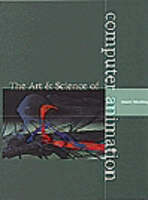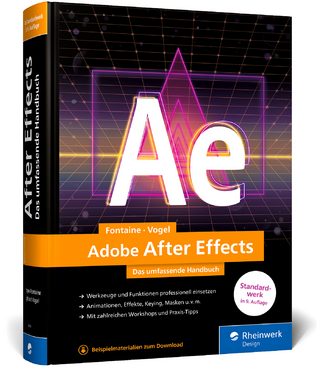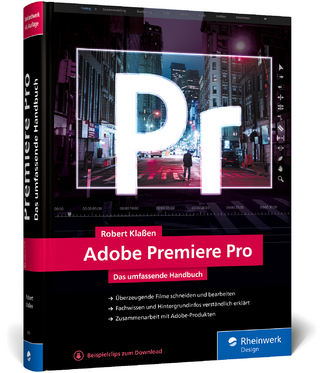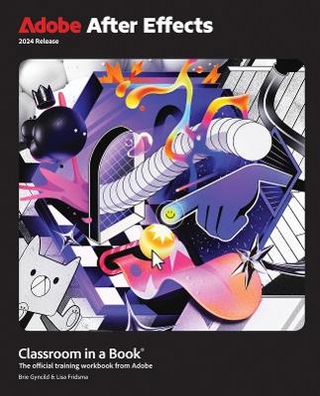
The Art and Science of Computer Animation
Intellect Books (Verlag)
978-1-871516-71-5 (ISBN)
- Titel z.Zt. nicht lieferbar
- Versandkostenfrei innerhalb Deutschlands
- Auch auf Rechnung
- Verfügbarkeit in der Filiale vor Ort prüfen
- Artikel merken
ACKNOWLEDGEMENTS
INTRODUCTION
PART ONE:
1. THE NATURE OF ANIMATION
1.1 Frame rates
1.2 Animation devices
1.3 Storyboards
1.4 Traditional methods
1.4.1 Model animation
1.5 Keyframing
1.6 The role of computers
1.7 Manipulation by computer
1.8 Paint systems
1.9 Other roles for the computer
1. 10 Three dimensions
1.11 Kinematics/dynamics
1.12 Rule-based systems
1.13 Artificial intelligence
2. APPLICATIONS OF COMPUTER ANIMATION
2.1 TV graphics
2.2 Scientific visualisation
2.3 Simulation
2.4 Flight simulators
2.5 Military
2.6 Space
2.7 Architecture
2.8 Archaeology
2.9 Medical
2.10 Film
2.11 Special effect
2.12 Advertising
2.13 Corporate video
2.14 Education
2.15 Games
2.16 Art
2.17 Multimedia
2.18 Conclusion
3. BASICS OF COMPUTER GRAPHICS
3.1 Pixels
3.2 Coordinates
3.3 Raster/vector
3.4 Transformations
3.5 Modelling
3.6 Hidden surfaces
3.7 Rendering
3.8 Textures
3.9 Artifacts
3.10 Hardware
3.11 Expense
4. MOVEMENT CONTROL
4.1 Paths
4.1.1 Curved paths
4.1.2 Other uses
4.2 Kinematics
4.3 Parametrics
4.4 Dynamics
4.5 Inverse control
4.6 Hybrid control
4.7 Control level
4.8 Metamorphosis
4.9 Displacement animation
4.10 Rotation
4.11 Motion blur
4.12 Conclusion
5. THE HUMAN/COMPUTER INTERFACE
5.1 Requirements
5.2 Input devices
5.2.1 Keyboard
5.2.2Mouse
5.2.3 Tracker ball
5.2.4 Joystick
5.2.5 Digitising pad
5.2.6 Other devices
5.3 Feedback
5.4 The screen environment
5.5 The 3-D environment
5.6 HCI for animators
6. HARDWARE CONSIDERATIONS
6.1 Bits and chips
6.2 Architecture
6.3Memory
6.4 Types of computer
6.5 Display
6.6 Frame buffers
6.7 Saving the image
6.7.1 Hard copy
6.7.2 Film
6.7.3 Video
6.8 Image input devices
6.9 Standards
6.10 Hardware for animation
7. SOFTWARE
7.1 Choice
7.2 Examples
7 .2.1 Modelling
7.2.2 Rendering
7.2.3 Choreography
7.2.4 2-D
7.3 Customised
7.4 Compatibility
The Art and Science of Computer Animation
7.4.1 Standards
7.4.2 Postscript
7.4.3 RenderMan
7.5 Device control
7.5.1 Multimedia
7.6 Conclusion
8. LANGUAGE CONSIDERATIONS
8.1 Language types
8.1.1 Low level/high level
8.1.2 Interpreted/compiled
8.1.3 ProceduraVdedarative
8.1.4 Object-orientated
8.1.5 ParalleVsequential
8.1.6 Dedicated languages
8.1.7 Hybrid languages
8.2 Relevant languages
8.2.1 Algol
8.2.2 Assembler
8.2.3 BASIC
8.2.4 C
8.2.5C++
8.2.6FORTH
8.2.7 FORTRAN
8.2.8 LISP
8.2.9Logo
8.2.10 Occam
8.2.11 Pascal
8.2.12 PROLOG
8.2.13 Pseudocode
8.2.14 SmallTalk
8.3 Choice of language
PART TWO:
9. STATE-OF-THE-ART: SIMULATION
9.1 Dynamics
9.2 Physically based modelling
9.3 Constraints
9.4 Collisions
9.4.1 Collision detection
9 .4.2 Collision response
9.4.3 Collision avoidance
9.5 Behaviour
9.6 Teleological modelling
10. STATE-OF-THE-ART: SOFT MODELLING
10.1 Particle systems
10.1.1 Globular dynamics
10.2 Parametric modelling
10.2.1 Clouds
10.2.2 Waves
10.2.3 Plant models
10.3 Voxels
10.4 Fractals
10.4.1 Iterated function systems
10.5 Finite element methods
10.5.1 Cloth
10.6 Fur and texels
10.7 Stochastics
10.8 Conclusion
11. STATE-OF-THE-ART: BEHAVIOURAL ANIMATION
11.1 Artificial intelligence
11.1.1 Distributed AI
11.1.2 Expert systems
11.1.3 Human intelligence
11.2 Grouping
11.3 Goal seeking
11.4 Vision
11.5 Stimulus-response animation
11.6 Arbitration
11.7 Conclusion
12. STATE-OF-THE-ART: SYNTHETIC HUMANS
12.1 Locomotion
12.2 Tasks
12.3 Appearance
12.4 Facial animation
12.5 Characterisation
13. THE FUTURE TODAY
13.1 Virtual reality
13.2 Interfaces
13.3 Digital dough
13.4 Eric
13.5 Hardware
13.5.1 Nanotechnology
13.6 Multimedia
13.7 Conclusion
APPENDICES
A. Book recommendations
B. Dynamics formulae
C. 'Pencil test'
GLOSSARY OF TERMS
BIBLIOGRAPHY
INDEX
| Erscheint lt. Verlag | 1.11.1999 |
|---|---|
| Sprache | englisch |
| Themenwelt | Kunst / Musik / Theater ► Design / Innenarchitektur / Mode |
| Informatik ► Grafik / Design ► Film- / Video-Bearbeitung | |
| Informatik ► Weitere Themen ► CAD-Programme | |
| ISBN-10 | 1-871516-71-4 / 1871516714 |
| ISBN-13 | 978-1-871516-71-5 / 9781871516715 |
| Zustand | Neuware |
| Haben Sie eine Frage zum Produkt? |
aus dem Bereich


